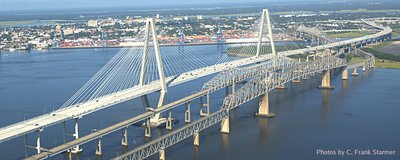The Bridge Blog
A dialog about our new bridge and these web pages
Overview.
Schools and universities are all about learning - and learning is mostlly
brain training. Learning is expedited by repetition and forgetting
is expedited by infrequent use of learned skills or information.
Tracking the building of the Ravenel Bridge and now tracking the
demolition of the Grace and Pearman Bridges bring
many questions to me and help me better understand the role Google
and the Internet play in
just-in-time learning. I enjoy chasing my curiosity and
want to identify ways to encourage younger learners to also enjoy curiosity
chasing and learning.
Many young learners do not understand the importance of repetition. More
important, while experienced learners understand the learning process
they often do not realize the destructive effects of the forgetting
process. Over the course of the
bridge project, I have access to only a few experts.
Rather than a liability, this has become an asset and pushed me to improve
my search skills with Google. Soon, I realized that answers
to questions encountered during my photo adventures were often
only a Google-search away. Gene Stead,
my first boss and I put these ideas together in a small essay:
(see
Restoring the Joy in Learning).
Google + Internet have become dependable extensions of my memory.
Insights I gain from you and this project will find their way into the
learning centers in our schools and universities.
Sun, 23 Jul 2006
July 23, 2006 Curious about double images in the pier base explosions
Many of you know that a lot of fun in my day is based on exploring data.
I have never understood why data analysis was so much fun - but as long as
I can remember, I have enjoyed looking at data, looking for common
denominators, looking for the unexpected and then trying to understand the
basis of a common denominator or explain an unexpected result.
Here are two frames from imploding the base of P-10 on July 12, 2006.
Note the double image of the wave at the base of the pier foundation and
smoke
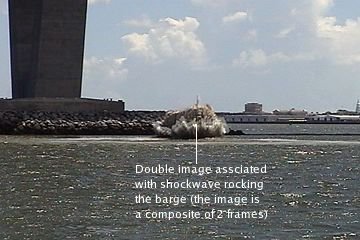
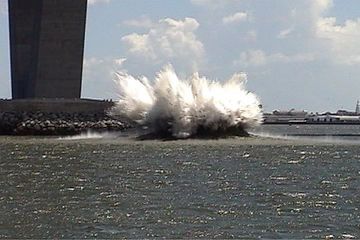
Thinking that was associated with an underwater shock wave colliding with the
barge used for video recording, I looked at the implosion of C-1 on July 14
and observed the same result - a double image
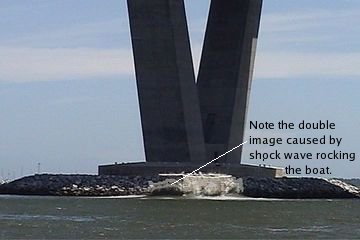
and then after several hundred milliseconds, the double image resolved into a
single image
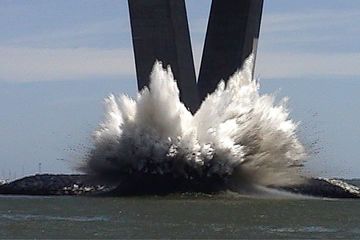
Testing whether this was associated with some sort of underwater shock wave,
I selected as a control, the above-water implosion of the C-2 pier. My
speculation was that this blast did not involve an underwater shock wave
whereas the above two blasts created an underwater shock wave
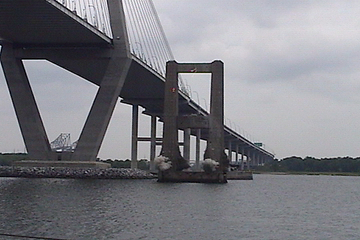

I could detect no double images with the C-2 pier implosion (above two images).
What I think is happening is that each video frame consists of two fields, one
of the even scan lines and one of the odd scan lines. When processed, the two
fields are combined which improves the resolution. One field is scanned
every 16.67 msec so I suspect that there was enough movement of the barge
between two consecutive frames to produce the double images.
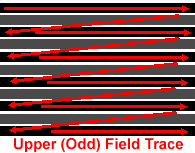
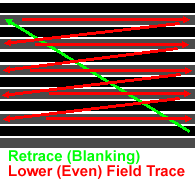
It would be interesting to superimpose the base of the rock island, behind
the pier foundations, and see if they appeared to shift up or down between
successive frames - paralleling the movement of the barge as the shock wave
passed.
posted at: 21:47 | path: | permanent link to this entry
